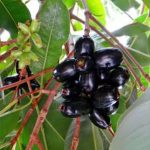Class 8- Geography- Short Notes- Land, Soil, Water, Natural Vegetation and Wildlife Resources LAND
- Land, a natural resource, covers 30% of the earth’s surface, all parts of which are not habitable. The uneven distribution of population on Earth is mainly due to variation of land and climate.
- The rugged topography, steep slopes of the mountains, low-lying areas susceptible to water logging, desert areas, thick forested areas are normally sparsely populated or uninhabited.
- Plains and river valleys are suitable for agriculture which makes them densely populated.
Land Use
- The use of land depends on physical factors such as topography, soil, climate, minerals and availability of water.
- Human factors such as population and technology are also important determinants of land use pattern.
- Land can also be classified on the basis of ownership as:
- Private land: Owned by individuals
- Community land: Owned by the community for common uses like collection of fodder, fruits, nuts or medicinal herbs. Such lands are also called common property resources.
Conservation of Land Resource
- The present rate of degradation of land must be checked.
- Afforestation, land reclamation, regulated use of chemical pesticide and fertilisers and checks on overgrazing are some of the common methods used to conserve land resources.
SOIL
- Soil is the thin layer of grainy substance covering the Earth.
- Landforms determine the type of soil. Soil is made up of organic matter, minerals and weathered (breaking up and decay of exposed rocks, by temperature changes, frost action, plants, animals and human activity) rocks found on the earth. This happens through the process of weathering. The right mix of minerals and organic matter make the soil fertile.
Factors of Soil Formation
- The nature of the parent rock: determines colour, texture, chemical properties, mineral, content, permeability
- Climatic factors: temperature, Rainfall influence rate of weathering and humus formation
- Topography: Altitude and slope, determine accumulation of soil
- Role of organic material: Affect the rate of humus formation.
- Time taken for the composition of soil formation: determines thickness of soil profile.
Degradation of Soil and Conservation Measures
- Factors which degrade soil are deforestation, overgrazing, overuse of chemical fertilisers or pesticides, rain wash, landslides and floods.
- Some methods of soil conservation are:
- Mulching: The bare ground between plants is covered with a layer of organic matter like straw. It helps to retain soil moisture.
- Contour barriers: Stones, grass, soil are used to build barriers along contours. Trenches are made in front of the barriers to collect water.
- Rock dam: Rocks are piled up to slow down the flow of water. This prevents gullies and further soil loss.
- Terrace farming: Broad flat steps or terraces are made on the steep slopes so that flat surfaces are available to grow crops. They reduce surface runoff and soil erosion.
- Intercropping: Different crops are grown in alternate rows and are sown at different times to protect the soil from rain wash.
- Contour ploughing: Ploughing parallel to the contours of a hill slope to form a natural barrier for water to flow down the slope.
- Shelter belts: In the coastal and dry regions, rows of trees are planted to check the wind movement to protect soil cover.
WATER
- Water is a vital renewable natural resource.
- Fresh water accounts for only about 2.7 per cent. Nearly 70 per cent of this occurs as ice sheets and glaciers in Antarctica, Greenland and mountain regions and are inaccessible.
- Only 1 per cent of freshwater is available and fit for human use. It is found as ground water, as surface water in rivers and lakes and as water vapour in the atmosphere.
- Water can neither be added nor subtracted from the earth. Its total volume remains constant.
- Its abundance only seems to vary because it is in constant motion, cycling through the oceans, the air, the land and back again, through the processes of evaporation, precipitation and run-off. This is referred to as the ‘water cycle’.
Also read: How to Get Scholarship to Study Abroad
Problems of Water Availability
Water shortage may be a consequence of variation in seasonal or annual precipitation, over-exploitation and contamination of water sources.
Conservation of Water Resources
- Forest and other vegetation cover slow the surface runoff and replenish underground water.
- Rain Water harvesting is another method to save surface runoff. It is the process of collecting rain water from roof tops and directing it to an appropriate location where it is stored for future use. On an average, one spell of rain for two hours is enough to save 8,000 litres of water.
- The canals used for irrigating field should be properly lined to minimise losses by water seepage.
- Sprinklers effectively irrigate the area by checking water losses through seepage and evaporation.
- In dry regions with high rates of evaporation, drip or trickle irrigation is very useful. The valuable water resource can therefore be conserved by adopting these means of irrigation.
Natural Vegetation and Wildlife
- Natural vegetation and wildlife exist only in the narrow zone of contact between the lithosphere, hydrosphere and atmosphere that we call biosphere.
- In the biosphere living beings are inter-related and interdependent on each other for survival. This life supporting system is known as the ecosystem.
Distribution of Natural Vegetation
- The growth of vegetation depends primarily on temperature and moisture.
- The major vegetation types of the world are grouped as forests, grasslands, scrubs and tundra.
- In areas of heavy rainfall, huge trees may thrive. The forests are thus associated with areas having abundant water supply.
- As the amount of moisture decreases the size of trees and their density reduces. Short stunted trees and grasses grow in the regions of moderate rainfall forming the grasslands of the world.
- Thorny shrubs and scrubs grow in dry areas of low rainfall. In such areas plants have deep roots and leaves with thorny and waxy surface to reduce loss of moisture through transpiration.
- Tundra vegetation of cold Polar Regions comprise of mosses and lichens.
Conservation of Natural Vegetation and Wildlife
- Changes of climate and human interferences can cause the loss of natural habitats for the plants and animals.
- Many species have become vulnerable or endangered and some are on the verge of extinction.
- Deforestation, soil erosion, constructional activities, forest fires, tsunami and landslides are some of the human and natural factors which accelerate the process of extinction of these resources.
- Poaching results in a sharp decline in the number of particular species
- National parks (A natural area designated to protect the ecological integrity of one or more ecosystems for the present and the future generations), wildlife sanctuaries, biosphere reserves (Series of protected areas linked through a global network, intended to demonstrate the relationship between conservation and development) are made to protect our natural vegetation and wildlife.
- Awareness programmes like social forestry and Vanamohatasava should be encouraged at the regional and community level.
- School children should be encouraged to bird watch and visit nature camps so that they appreciate the habitat of varied species.
- Many countries have passed laws against the trade as well as killing of birds and animals. In India, killing lions, tigers, deer, great Indian bustards and peacocks is illegal.
- An international convention CITES has been established that lists several species of animals and birds in which trade is prohibited. CITES (the Convention on International Trade in Endangered Species of Wild Fauna and Flora) is an international agreement between governments. It aims to ensure that international trade in specimens of wild animals and plants does not threaten their survival.











